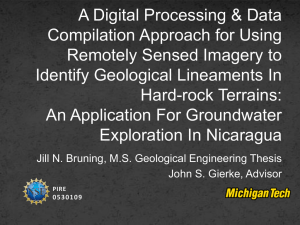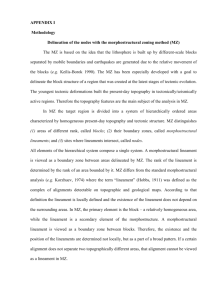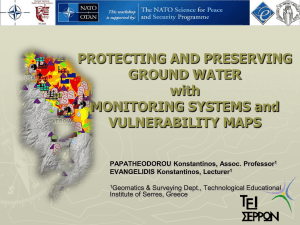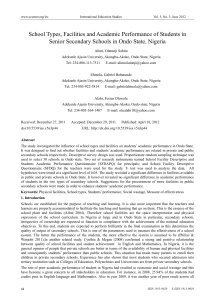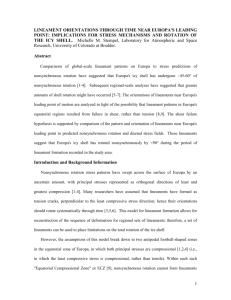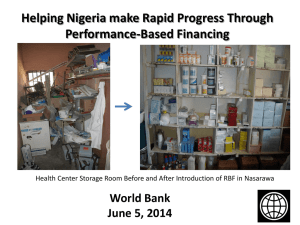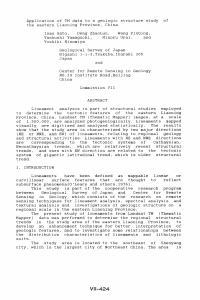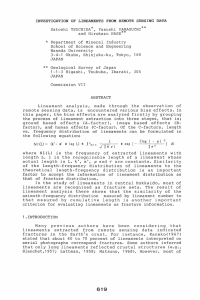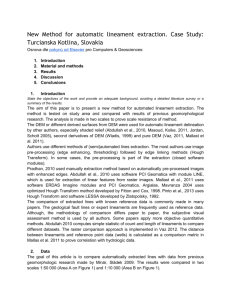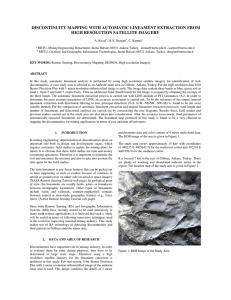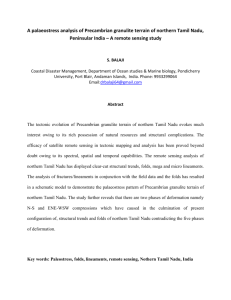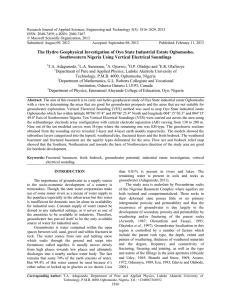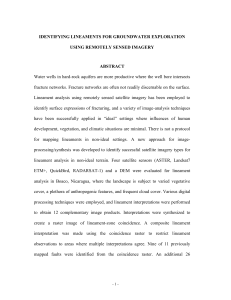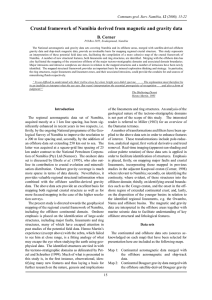presentation, ppt - IGCP 565 Project
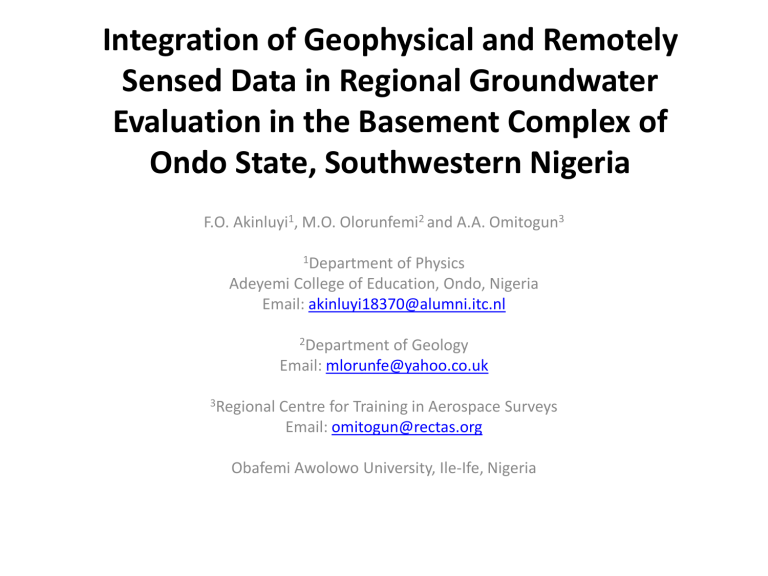
Integration of Geophysical and Remotely
Sensed Data in Regional Groundwater
Evaluation in the Basement Complex of
Ondo State, Southwestern Nigeria
F.O. Akinluyi 1 , M.O. Olorunfemi 2 and A.A. Omitogun 3
1 Department of Physics
Adeyemi College of Education, Ondo, Nigeria
Email: akinluyi18370@alumni.itc.nl
2 Department of Geology
Email: mlorunfe@yahoo.co.uk
3 Regional Centre for Training in Aerospace Surveys
Email: omitogun@rectas.org
Obafemi Awolowo University, Ile-Ife, Nigeria
Outline
• Introduction
• Study Area
• Datasets
• Objectives
• Methodology (Lineament)
• Preliminary Results
• Further Study
Introduction
• Access to potable water in Ondo State, Nigeria, is inadequate due to shortfall in the public water supply.
• This has led people to resort to rain water harvesting, digging of shallow hand-dug wells and surface water sources such as streams or rivers.
• These water sources are highly susceptible to contamination because they are surface to near-surface.
• This necessitated the search for groundwater as an alternative source.
The Study Area
• It lies between latitudes and N and longitudes
0
4 30
'
• Ondo State is underlain by both the Precambrian
Basement rocks and sedimentary formations (Figure 1).
• The Basement Complex underlies the northern part
(60%) of the state which constitutes the study area.
The Study Area Contd.
Figure 1: Map of Ondo State Showing the Generalized
Geology
Datasets
Datasets Contd.
3-D of the Study area
• The objectives are to:
Objectives
• (i) identify and extract geologically induced lineaments and other discontinuities from remote sensing data;
• (ii) carryout statistical analysis of the lineaments;
• (iii) evaluate hydrogeological characteristics by correlating and synthesizing VES data, borehole information, extracted lineaments, GRACE data and geology;
• (iv) carryout geoelectric survey based on (iii) in order to delineate the groundwater aquifer(s) and determine the layer resistivities and lateral extent; and
• (v) Classify the study area into different groundwater potential zones.
Methodology (Lineament)
• (i) Ondo State boundary in shapefile was used to subset
Landsat ETM+ and ASTER GDEM.
• (ii) The following processing techniques were applied to the imageries: radiometric enhancement, Linear stretching, spatial enhancement, edge enhancement e.g. Sobel filter, spectral enhancement i.e. principal component analysis
(PCA), Band ratioing and colour compsite.
• (iii) Combination of all images in (ii) in conjuction with DEM were used to digitize and generate lineament map.
• Rose diagram was generated from the lineaments.
Preliminary Results
• Figure 2 shows the spatial distribution of lineaments excluding exposed rock outcrops.
• The Rose diagram showed three (3) main lineament trends
–: N-S, NE-SW, E-W.
Preliminary Results Contd.
Figure 2: Lineament Map and Lineament Rose diagram of the Basement Complex Terrain
Further Study
• Lineament density map will be generated from Figure 2 as index of groundwater potentials.
• I will source for Vertical Electrical Sounding (VES) and
Borehole (BH) data.
• I will acquire primary data i.e. VES and BH where there are data gaps.
• The above results will be integrated with GRACE data in order to classify the study area into high, moderate, low and very low groundwater potential zones.


